The Ultimate Guide to Perfect Beard Shaving Techniques
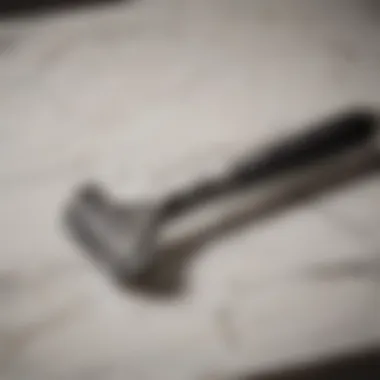
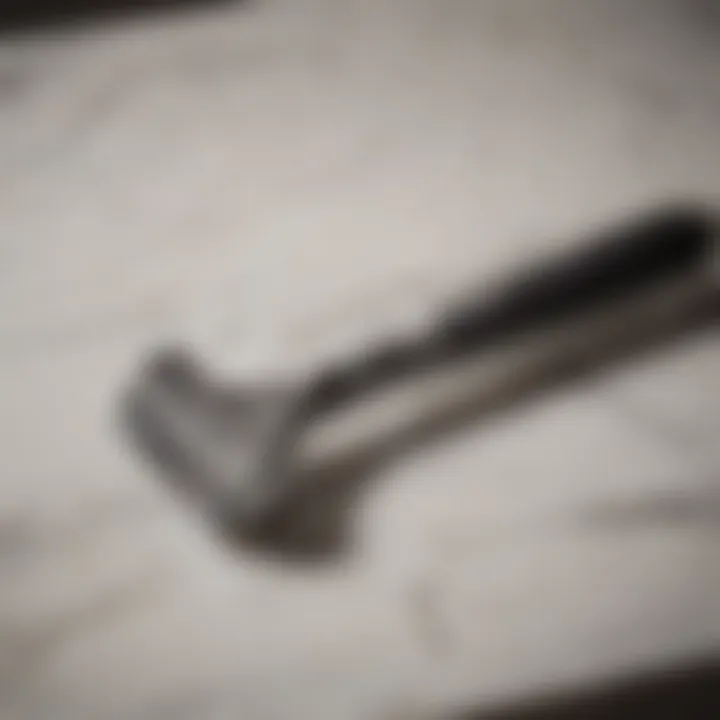
Intro
Shaving a beard is a routine task for many men, yet it remains a skill that deserves refinement and attention. The objective is not just to remove hair but to achieve a precise look that complements the individual's style. This guide aims to provide essential insights into the best methods for shaving, focusing on the necessary tools, techniques, and post-shave care that can significantly enhance your grooming experience.
Beard types vary widely, from thick and coarse to thin and soft. Understanding one's beard type is crucial; it influences not only shaving products but also the technique used. This article emphasizes a tailored approach, ensuring that every reader can find relevant advice suited to their specific grooming needs. Additionally, we will explore the importance of skin care before and after shaving, as it plays a vital role in achieving a smooth and irritation-free finish.
Understanding Beard Types
Understanding different beard types is crucial for achieving an optimal shaving experience. Each individual’s facial hair possesses unique characteristics that necessitate tailored approaches to grooming. Whether it’s the way hair grows or the texture of the hair itself, these factors influence the choice of tools, products, and techniques. This knowledge enables men to select suitable methods and avoid common pitfalls that could lead to irritation or unsatisfactory results.
Facial Hair Growth Patterns
Facial hair growth varies significantly from one person to another. It can grow in different directions, density levels, and rates. For example, some men experience rapid growth in certain areas, while others may have patchy spots. Recognizing your specific growth pattern allows for strategic shaving. Most often, it is suggested to shave in the direction of hair growth to minimize irritation and achieve a cleaner finish. Notably, this step requires so much attention, and failing to do so can result in ingrown hairs and razor burn. Furthermore, observing how hair grows can assist in identifying the best products for managing hair style and texture.
Different Hair Textures
Hair texture is another important factor in considering shaving styles. Some men have fine hair, while others have coarse or curly hair. For fine hair, a light touch and moderate pressure might be ideal. In contrast, coarse hair may require specific products like thicker shaving creams to adequately soften hair before the shaving process. Curly beards tend to tangle more easily which can complicate the shaving process, necessitating the use of specialized tools and products. Being aware of these differences is fundamental in creating an effective grooming routine that caters to individual needs.
Common Beard Styles
The array of beard styles available today allows men to express personal identity and preferences. Styles like the full beard, goatee, or stubble each require different maintenance levels and shaving techniques.
- Full Beard: Generally more time-consuming to maintain, it needs regular trims and products to prevent dryness.
- Goatee: It allows for versatility and can be shaped easily, which is beneficial for those experimenting with style.
- Stubble: This requires a particular razor setting to maintain that just-shaved look without complete hair removal.
Choosing a style that suits one's face shape and personal aesthetics is key to achieving a desired look. Furthermore, regularly updating your beard style can keep your grooming routine interesting and aligned with current trends.
By understanding beard types, men can make informed choices that enhance their grooming routine. This intentional approach not only improves shaving results but also contributes to a well-maintained appearance.
Choosing the Right Tools
Choosing the right tools for shaving is a fundamental step that can significantly affect the quality of the shave and the overall experience. The correct tools contribute to achieving a closer shave while minimizing skin irritation. Furthermore, the choice of tools reflects individual preferences and styles, making it essential to select items that align with one's grooming routine. In this section, we will delve into the different types of razors and essential shaving accessories necessary for a successful shave.
Types of Razors
Safety Razors
Safety razors are distinct for their design, which includes a protective guard that minimizes the risk of nicks and cuts while shaving. This feature helps users achieve a closer shave without compromising safety. Many consider safety razors a popular choice for their effectiveness and affordability. They typically utilize replaceable blades, which can be both economical and environmentally friendly compared to disposable razors. The downside, however, is the learning curve that may intimidate some beginners, as proper technique is crucial for optimal use.
Straight Razors
Straight razors, also known as cut-throat razors, are notable for their sharp, single blade that offers unmatched precision in shaving. Users value the level of control and closeness attainable with this type of razor, making it a preferred choice among traditional grooming enthusiasts. The key characteristic of straight razors is their ability to be honed and stropped, allowing for extended use. On the other hand, they necessitate a higher level of skill and maintenance, which may deter less experienced users.
Cartridge Razors
Cartridge razors are widely recognized for their convenience and ease of use. Equipped with multiple blades, they are engineered to provide a smooth shave quickly and effectively. The design often includes pivoting heads that follow the contours of the face, making them user-friendly for those new to shaving. However, some users question their effectiveness compared to safety or straight razors, particularly regarding environmental impact, as they produce more waste.
Essential Shaving Accessories
Shaving Cream
Shaving cream plays a vital role in the shaving process by providing a protective layer over the skin. This layer is essential for reducing friction between the razor and the skin, thus preventing irritation. Additionally, good quality shaving creams hydrate the skin and enhance the glide of the razor. It is worth noting that the right formulation can vary from person to person, so finding one that suits both skin type and personal preference is crucial.
Pre-shave Oil
Pre-shave oil is often an overlooked but critical accessory in the shaving routine. It acts as a barrier to minimize the chances of razor burn and cuts. By softening the beard and providing a slick surface, pre-shave oil can significantly enhance the shaving experience. Users with sensitive skin may find this product particularly beneficial, though the application might require a slight adjustment of one's shaving routine.
Aftershave Balm
Aftershave balm is essential for post-shave care, soothing the skin after the hair removal process. The primary function of aftershave is to provide hydration and reduce any potential irritation caused during shaving. Many formulations include nourishing ingredients that can aid in skin recovery. Although the choice of aftershave can be personal, finding one that complements the shaving routine is essential.
"Choosing the right tools for shaving is not just about preference; it's about enhancing your grooming routine and protecting your skin."
Overall, selecting the appropriate razors and accessories can make or break the shaving experience. Taking the time to understand the options available is a step towards achieving optimal results.
Preparing for Shaving
Preparing for shaving is a critical step that sets the foundation for a smooth and effective grooming experience. The objective is to ensure the skin and facial hair are properly treated before any cutting occurs. Ignoring this stage can lead to discomfort, irritation, and an overall unsatisfactory shave. The benefits of preparation are clear: it not only minimizes the risk of razor burn and nicks but also enhances the closeness of the shave, providing a better result.
Cleansing Your Face
Cleansing your face before shaving is essential. It removes dirt, oil, and any impurities that may be on the skin. This step opens the pores, making it easier for the razor to glide over the skin. A good cleanser suited for your skin type can make a difference. It is advisable to use warm water, as it helps to soften the hair and opens the pores. Gently massage the cleanser onto your skin, then rinse thoroughly. Pat your face dry with a clean towel. This simple act of cleansing not only prepares your skin but also enhances your comfort during the shave.
Softening Facial Hair
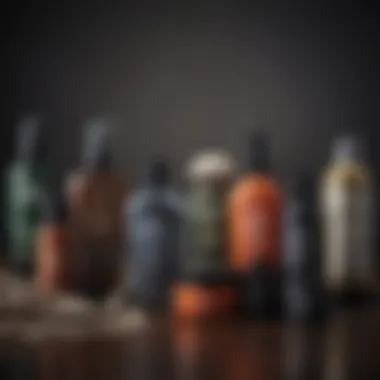
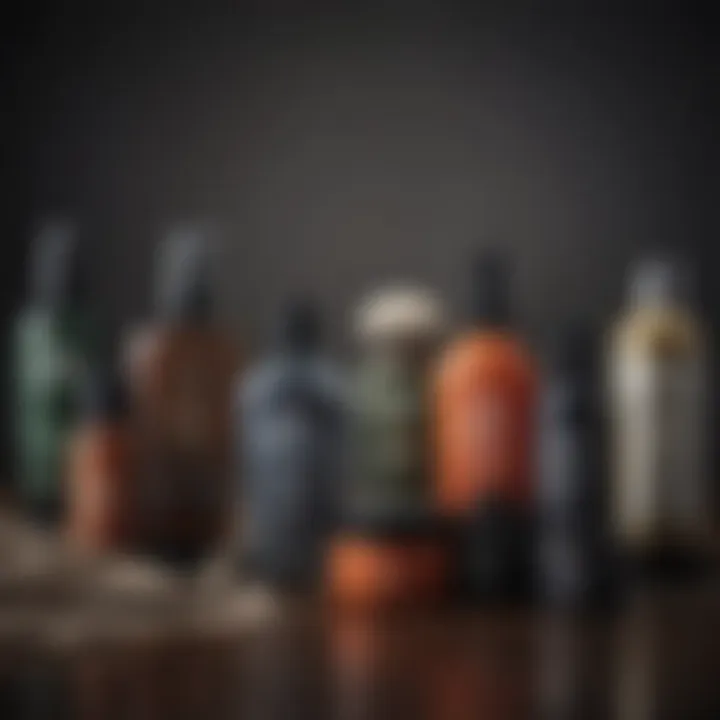
Softening the facial hair is another important component of the preparation process. This can be achieved through the use of warm water or steam. Apply a warm, damp cloth to your beard. This helps to relax the hair and makes it easier to cut. The idea is to make the hair less rigid and more pliable. Additionally, soft hair responds better to shaving, resulting in less tugging and pulling. A hot shower prior to shaving can serve this purpose well. Body heat will help in softening the hair, which is crucial for an effective shave.
Applying Pre-shave Products
Using pre-shave products can greatly improve your shaving experience. These products, such as pre-shave oil or cream, create a protective barrier on the skin. This barrier helps the razor glide smoothly, which can prevent irritation. It is important to apply these products evenly, allowing them to penetrate the hair. The right pre-shave product can also hydrate the skin. Look for ingredients like essential oils, which can nourish and soothe your skin while preparing it for the razor. In this way, you set yourself up for a successful and comfortable shave.
"Preparation is the key to a successful shaving experience, reducing irritation and enhancing closeness."
Following these preparatory steps not only optimizes your shaving routine but also ensures the health of your skin. Establishing this as part of your regular grooming regimen is wise for anyone serious about shaving.
Shaving Techniques
Shaving techniques play a crucial role in achieving a clean and smooth finish. Understanding how to shave properly can minimize discomfort, reduce the risk of skin irritations, and produce a polished look. Here, we will focus on key shaving techniques that every man should master. By employing the right techniques, you not only improve the quality of your shave but also ensure that the process is more enjoyable.
Shaving Against the Grain
Shaving against the grain refers to moving the razor in the opposite direction of hair growth. This technique is often touted for its potential to achieve a closer shave. However, caution is needed. Shaving against the grain can irritate sensitive skin and may lead to razor burn in some individuals. The advantage of this technique lies in its ability to lift hair for a nearer cut.
To effectively shave against the grain, follow these considerations:
- Know your hair growth: Examine your beard closely to determine the direction of hair growth. This varied growth can differ based on the area of the face.
- Preparation is key: Ensure adequate skin and hair softening with warm water and shaving products to reduce resistance.
- Be gentle: Apply minimal pressure while shaving. Allow the razor to do its work to avoid nicks and cuts.
In short, shaving against the grain can offer a closer shave, but it is essential to balance this technique with skin sensitivity.
Proper Razor Angles
The angle of the razor significantly influences the quality of your shave. An incorrect angle can lead to missed hairs or, worse, cuts and razor burn. The optimal angle typically ranges between 30 to 45 degrees.
Here are some points to consider:
- Maintain the angle: Holding the razor at the right angle ensures that the blade makes contact with the hair without digging into the skin.
- Adjust for the areas: Adjust the angle slightly for different areas of the face. For instance, the jawline may need a slightly sharper angle compared to the chin.
- Practice stability: Always steady your hand and ensure that it does not shake. A steady hand helps maintain the correct angle throughout the shave.
Proper razor angles facilitate a smoother shave while minimizing potential injuries. This attention to detail can make a notable difference.
Short, Controlled Strokes
Short, controlled strokes are a fundamental technique that contributes to effective shaving. Instead of making long strokes, focusing on shorter movements allows for greater control and precision.
The benefits of this technique include:
- Heightened control: Working in smaller sections can be easier to manage, especially in intricate areas around the mustache or chin.
- Reduced irritation: Short strokes minimize skin irritation and provide clear visibility of the area you are shaving.
- Precision: This technique allows for better maneuvering around curves and contours of the face.
"Using short and controlled strokes can make a notable difference in achieving an even and clean shave."
Managing Common Shaving Issues
Understanding how to manage common shaving issues is crucial for achieving a comfortable and effective shaving experience. Various problems can arise during or after shaving, and knowing how to address them not only minimizes discomfort but also enhances the overall grooming routine. Learning about these issues ensures that you can enjoy clean results without frustration. Common shaving problems include razor burn, ingrown hairs, and nicks or cuts, each needing specific attention to prevent further complications. A thoughtful approach to these elements can significantly improve your experience.
Dealing with Razor Burn
Razor burn is a common irritant many individuals face after shaving. It manifests as redness, bumps, and a burning sensation, often caused by friction or improper shaving techniques. To deal with razor burn, it is essential to first identify its cause. Using a dull blade, shaving against the grain, or not adequately softening facial hair can contribute to this issue.
To reduce razor burn:
- Use a sharp, clean razor: Dull blades increase the chance of irritation.
- Shave during or after a hot shower: This helps soften the hair and open pores.
- Apply cold water post-shave: This cools the skin and tightens pores.
Using an alcohol-free aftershave balm can help soothe the skin post-shave, reducing discomfort. Products with ingredients like aloe vera or witch hazel can provide both relief and hydration.
Preventing Ingrown Hairs
Ingrown hairs occur when hair grows back into the skin instead of rising through the follicle. They can lead to painful bumps and unsightly skin irritation. Preventing ingrown hairs revolves around proper shaving practices and post-shave product application.
To help avoid ingrown hairs, consider:
- Exfoliating before shaving: This removes dead skin cells, allowing hair to grow free.
- Shaving in the direction of hair growth: Reduces the risk of hair curling back into the skin.
- Keeping the skin moisturized: Dry skin can exacerbate this condition.
Routine use of beard oils can also help. They hydrate the skin while softening hair, which can lessen the chances of hair becoming trapped.
Avoiding Nicks and Cuts
Nicks and cuts are perhaps the most anxiety-inducing issues for those who shave. They can occur from careless technique, using a razor that is too dull, or rushing through the process. To avoid these mishaps, focus on precision and control.
To minimize the risk of nicks and cuts:
- Maintain steady pressure: Do not press too hard; let the razor do the work.
- Utilize short strokes: Instead of long sweeps, short strokes provide more control.
- Keep the skin taut: This offers a smoother surface for the blade, reducing snags.


If an accident does happen, rinse the area with warm water and then apply pressure with a clean cloth. Afterward, use a styptic pencil or antiseptic to help stop the bleeding and prevent infection.
"Proper post-shave care is just as important as the shaving itself."
Post-Shave Care
Post-shave care is an essential aspect of the shaving process. While achieving a clean shave is important, the steps taken afterward can greatly affect the overall health and appearance of your skin. Proper post-shave care can prevent irritation, maintain moisture, and ensure that the skin remains vibrant and smooth. This section will delve deep into the significance of this phase.
Applying Aftershave Products
Aftershave products are designed to soothe the skin following shaving. They often contain a blend of alcohol and soothing agents that can help to close pores and reduce any irritation caused during the process. When selecting an aftershave, consider those that are alcohol-free to avoid excessive dryness. Ingredients like aloe vera, witch hazel, and chamomile can help calm the skin and provide moisture.
Benefits of Aftershave Products:
- Soothing Effects: They can instantly relieve any burning sensation from shaving.
- Pore Minimization: Helps tighten the skin and reduce the appearance of pores.
- Fragrance: Many aftershaves come with pleasant scents, adding a fresh layer of fragrance to your grooming routine.
It is advisable to apply aftershave while the skin is still slightly damp. This helps the ingredients to penetrate better and provides optimal hydration. Gently pat the product on the skin instead of rubbing it in, which can cause further irritation.
"Proper application of aftershave can make the difference between healthy skin and irritated skin post shave."
Hydrating Your Skin
Post-shave hydration is crucial for the maintenance of skin elasticity and texture. After shaving, the skin can experience a loss of moisture. Therefore, it is beneficial to apply a moisturizer designed specifically for the facial area.
Key Points for Hydration:
- Choose the Right Moisturizer: Look for a product that suits your skin type, whether dry, oily, or combination. Lightweight gels or creams work well for oily skin, while thicker creams are suited for dry skin.
- Time of Application: Apply moisturizer promptly after shaving, ideally within five minutes. This helps lock in moisture and shields the skin from environmental stressors.
- Daily Routine: Make hydration part of your daily grooming routine. Consistent use of moisturizers can yield significant improvements in skin texture over time.
Hydrating post-shave can also involve using facial oils or serums that contain vitamins and antioxidants, providing an extra layer of protection and nourishment. Flat, dry skin can detract from the overall aesthetic appeal of your grooming efforts.
By following these post-shave care guidelines, one can ensure that the skin remains smooth, healthy, and visually appealing.
Maintaining Your Beard Between Shaves
Maintaining your beard between shaves is crucial for achieving a polished appearance and ensuring the health of your facial hair. Regular grooming not only keeps your beard looking neat, but it also prevents common issues such as split ends, dryness, and tangling. Beard maintenance allows for a cleaner canvas when it comes time to shave, which can lead to a smoother and more satisfying grooming experience. By investing time in proper upkeep, you can enjoy the benefits of a well-groomed beard without the need for frequent shaves.
Trimming Techniques
Trimming is an essential part of maintaining your beard. It promotes healthy growth and manages any stray hairs. Here are some considerations for effective trimming:
- Choosing the Right Tools: Use sharp scissors or a quality beard trimmer tailored for facial hair. Dull blades can cause damage.
- Frequency of Trimming: Aim to trim your beard every few weeks. This helps to avoid overgrowth and maintains your desired shape.
- Technique: Work in small sections, trimming just a little at a time. Inspect your progress frequently in a well-lit area to ensure symmetry and evenness.
- Beard Shape: Follow the natural contours of your face. Consider your face shape when deciding on the length and style of your beard.
Following these guidelines will help to keep your beard looking stylish and intentional.
Beard Oils and Balms
Using beard oils and balms is essential for maintaining a healthy beard. These products provide hydration and protection, ensuring that your facial hair remains soft and manageable. Benefits of using these products include:
- Moisturizing Effect: Beard oils penetrate the hair and skin, providing deep moisture and preventing dryness. This helps to avoid itching and irritation.
- Fragrance: Many beard oils come with pleasant scents, adding a new dimension to your grooming routine. Choose scents that align with your personal style.
- Control and Styling: Balms provide hold, helping to tame stray hairs while adding a slight sheen. This makes them ideal for styling and ensuring your beard remains neat throughout the day.
"Regular use of good-quality beard oil not only nourishes the hair but also enhances your overall grooming routine."
To use these products effectively, apply a few drops of oil onto your palms, warm it up, then massage it into your beard and skin. For balms, scoop a small amount, soften it between your fingers, and work it through your beard to encourage even distribution and styling.
Maintaining your beard is an ongoing process requiring attention and care. By implementing sound trimming techniques and incorporating oils and balms into your routine, you can ensure your beard remains healthy and stylish between shaves.
Exploring Alternative Grooming Methods
Alternative grooming methods for shaving facial hair have gained traction among men seeking efficiency and versatility in their grooming routines. It is vital to recognize that these methods provide options that cater to personal preferences and specific grooming needs. Whether you are looking for a quick touch-up or a detailed shave, understanding the various techniques can significantly impact your overall grooming experience.
Electric vs. Manual Shaving
The debate between electric and manual shaving continues among grooming enthusiasts. Both methods offer unique advantages depending on the individual’s goals and comfort level.
Electric shaving devices provide speed and convenience. They often require less time and no need for additional products like shaving cream. Many modern electric shavers are designed to minimize skin irritation and have features that adapt to the contours of the face. However, they may not provide as close a shave compared to manual methods. Options like the Braun Series 9 or Philips Norelco Shaver Series 9000 are popular choices.
On the other hand, manual shaving offers a more traditional approach, often appreciated for the close shave it delivers. Utilizing razors such as the Gillette Fusion ProGlide offers a precise cutting experience. This method allows for greater control over every stroke, enabling the user to address specific areas meticulously. Many prefer the ritual of manual shaving, combining quality products with techniques honed over time.
"The choice of electric or manual shaving is ultimately about what feels best for each individual."
Using Hair Trimmers
Hair trimmers have emerged as an essential tool in the grooming toolkit, especially for maintaining beard length and shape between shaves. These devices offer precision while minimizing the risk of accidents associated with a razor.
Trimmers vary in design, with options such as the Wahl Stainless Steel Lithium Ion Trimmer and the Philips Norelco Multigroom Series 7000 respected for their reliability and functionality. Users can easily adjust the length settings for different beard styles, allowing for tailored looks without extensive effort.
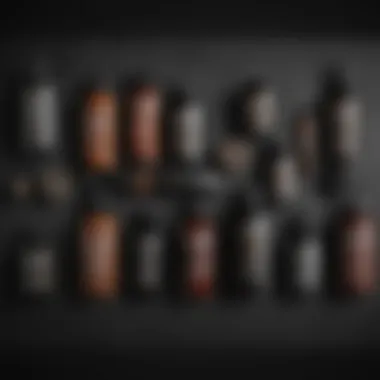
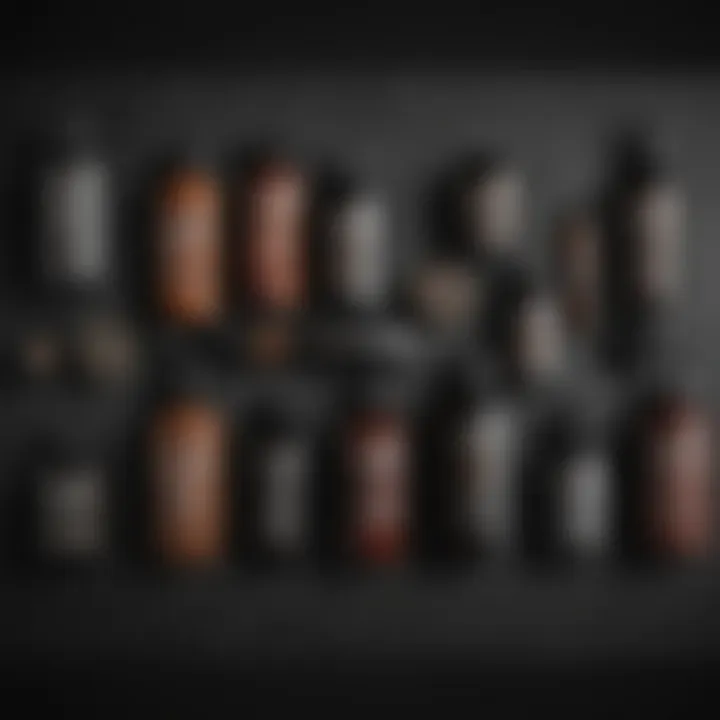
In addition, trimmers are excellent for defining lines and edges, helping groomers achieve a polished appearance. They can be used dry or with oils, adding versatility to the grooming process. However, it is essential to maintain them regularly to ensure optimal performance. This includes cleaning the blades and lubricating the motor to prevent pulling or snagging.
Thus, exploring alternative methods expands the potential for personalized grooming. Evaluating electric razors, manual shaving, and hair trimmers allows individuals to adapt their approach, maximizing efficiency and effectiveness in their daily routines.
The Role of Skin Type in Shaving
Understanding your skin type is essential for achieving an effective and comfortable shaving experience. Skin type significantly influences how one should approach shaving. Wether you have sensitive skin, normal skin, or oily skin, each type requires specific attention. Failure to consider skin type may result in discomfort, irritation, or even long-term skin issues.
When selecting products and techniques, it is wise to tailor methods according to skin characteristics. This not only enhances comfort but also promotes healthier skin alongside a cleaner shave.
Sensitive Skin Considerations
Sensitive skin demands a gentler approach during shaving. This skin type often reacts negatively to irritants and can experience redness, itching, and soreness quickly. Here are some considerations for those with sensitive skin:
- Choice of Razor: Using a safety razor or a cartridge razor with fewer blades can minimize irritation.
- Shaving Cream: Opt for fragrance-free creams that contain soothing ingredients like aloe vera or chamomile. Avoid products with alcohol and harsh chemicals.
- Technique: Always shave in the direction of hair growth to reduce the chance of irritation. Short strokes are also advisable.
- Hydration: Pre-shave oil can provide an extra layer of protection and moisture.
It's crucial to test products on a small skin area prior to use, ensuring there are no adverse effects.
Normal to Oily Skin Shaving Tips
For those with normal to oily skin, the shaving process can be slightly different. Oily skin often benefits from products that can control shine while still moisturizing. Here are some helpful tips:
- Shaving Cream: Look for a shaving cream that controls oil but does not dry the skin excessively. A gel-based product can work well here.
- Pre- and Post-Shave Products: Using a pre-shave oil can still be beneficial, but adding an oil-free aftershave will help keep the skin hydrated without adding shine.
- Frequent Shaving: Those with oily skin may find themselves shaving more often, which requires focus on skin care to prevent potential breakouts.
- Technique: Like with sensitive skin, ensure to shave with the grain and maintain controlled strokes to ensure an even shave without unnecessary irritation.
Understanding the role of skin type in your shaving routine can improve overall skin health as well as the quality of your shave. Adapting products and techniques to your specific skin needs will lead to improved results and a more comfortable experience.
"Customization in grooming routines ensures both effectiveness and enjoyment."
Advanced Shaving Techniques
In the quest for the perfect shave, advanced techniques can significantly elevate the grooming experience. Knowing the right methods goes beyond merely pressing a razor against the skin. Understanding these techniques allows for a closer shave with reduced irritation. Moreover, it crafts an opportunity for individuals to tailor their shaving routine to their specific needs while embracing the artistry of shaving. Whether you are a novice or someone who has experienced a variety of techniques, there is always room for improvement and refinement.
Shaving with a Straight Razor
Shaving with a straight razor is often regarded as the pinnacle of shaving. It requires a certain level of skill but can yield results that are unmatched. The sharp edge provides an exceptionally close shave. It also allows for better precision and control, which many men find appealing. A straight razor can be more environmentally friendly than disposable options, as it creates less waste and often lasts much longer if maintained properly.
However, mastering this technique involves understanding how to properly hold the razor and the right angle to achieve the best results. Here are some key points to consider:
- Sharpening: Regular honing and stropping are essential to maintain the sharpness. A dull razor increases the likelihood of nicks.
- Angle: Holding the razor at a 30-degree angle is optimal. This position allows for a smooth glide across the skin, reducing friction and irritation.
- Grip: A firm but comfortable grip helps prevent accidents. One common method is to hold the razor with three fingers, allowing more control.
- Preparation: The skin must be sufficiently prepped to ensure a seamless shave. Softening the hair and using a quality cream is critical.
In summary, while shaving with a straight razor can be daunting, the results can be highly rewarding. Practice and patience are crucial.
Mastering the Double Edge Razor
The double edge razor is an excellent choice for men seeking a combination of comfort and closeness. It offers several advantages over multi-blade razors. One significant benefit is cost-effectiveness. Double edge razors have replaceable blades that are less expensive than purchasing cartridges. Additionally, using a single blade reduces the risk of ingrown hairs and irritation.
To master this technique, consider the following:
- Blade Replacement: Regularly change the blades to maintain sharpness and hygiene. A dull blade increases the effort needed, leading to irritation.
- Technique: The pressure applied should be minimal. Allow the weight of the razor to do the work. This approach lowers the chance of cuts and enhances comfort.
- Direction: Similar to a straight razor, the angle of approach is crucial. Generally, shaving with the grain prevents irritation and leads to a smoother finish.
Cultural Perspectives on Shaving
Shaving is not merely a grooming routine; it encompasses a rich tapestry of cultural significance that varies across the globe. Understanding these perspectives offers insights into how different societies approach the act of shaving, revealing deeper meanings intertwined with identity, tradition, and even masculinity. This section aims to explore cultural aspects of shaving that often go unnoticed yet play a crucial role in shaping personal grooming practices.
Global Shaving Traditions
Across diverse cultures, shaving practices have evolved, reflecting local customs and beliefs. For example, in many Middle Eastern societies, the ritual of shaving holds spiritual significance. Men often undertake this practice before major events, symbolizing purification or readiness for new beginnings. In contrast, Western societies tend to treat shaving as a daily grooming task with less emphasis on ritual.
In East Asia, particularly in Japan, the practice of shaving is interwoven with aesthetics and precision. Men may use traditional techniques that focus on meticulous craftsmanship, using tools like the straight razor to achieve a clean look. The cultural importance of appearance has led to specialized products focusing on skin care and post-shave routines, enhancing not just the look but the overall experience.
Notably, some tribal cultures have unique shaving customs, often tied to rites of passage. These practices may involve ceremonial aspects and are critical in defining social identity within the community. Understanding these varied traditions allows individuals to appreciate their own shaving habits in the context of global practices.
The Evolution of Shaving Tools
The tools used for shaving reflect technological advancements and changing societal norms. From ancient survivalist methods of using sharpened stones to the crafted steel blades of today, shaving tools have undergone a significant transformation. In history, the Egyptians were among the first to use razors made of bronze, highlighting the importance placed on grooming.
The introduction of safety razors in the late 19th century revolutionized the way men approached shaving. Initially crafted for ease of use, these tools made it safer for the average person to shave without fear of cuts. Today, brands like Gillette continue to innovate, introducing multi-blade systems designed to offer a closer shave with minimal irritation.
Furthermore, the rise of electric razors in the 20th century provided options for convenience, appealing to those seeking a quick solution in a fast-paced world. This evolution not only changed how men groomed themselves but also affected societal expectations of male grooming.
Finale
In this article, we examined the multifaceted approach to shaving your beard. Grasping the correct methods is pivotal for achieving an optimal grooming outcome. Firstly, understanding your hair and skin types ignites a tailored experience that minimizes irritation and enhances comfort. Proper tool selection, such as razors and shaving creams, plays an equally vital role in the shaving process. Using the right tools allows for a cleaner shave and reduces complications.
The section on post-shave care highlighted important aftercare routines that many neglect. Application of aftershave products and moisturizers are essential to maintain skin health. This can prevent issues like dryness and can even combat redness often associated with shaving. Another significant element covered is the need to manage common shaving problems, such as razor burn and ingrown hairs. Recognizing these issues can allow for proactive management, thus ensuring a smoother experience.
By synthesizing these elements, one can focus on achieving both aesthetic appeal and skin wellness, which should be the ultimate goal. Shaving is not merely a task; it is a ritual that, when done correctly, can contribute to overall self-presentation and confidence.
"Understanding your grooming habits can greatly influence your appearance and how you feel about yourself."
It is advantageous to reflect on the discussed points and to implement them in your routine for effective results. Always prioritize technique and tools appropriate to your own unique needs. Effective shaving is a journey that, when managed correctly, promotes not only style but also self-care.















